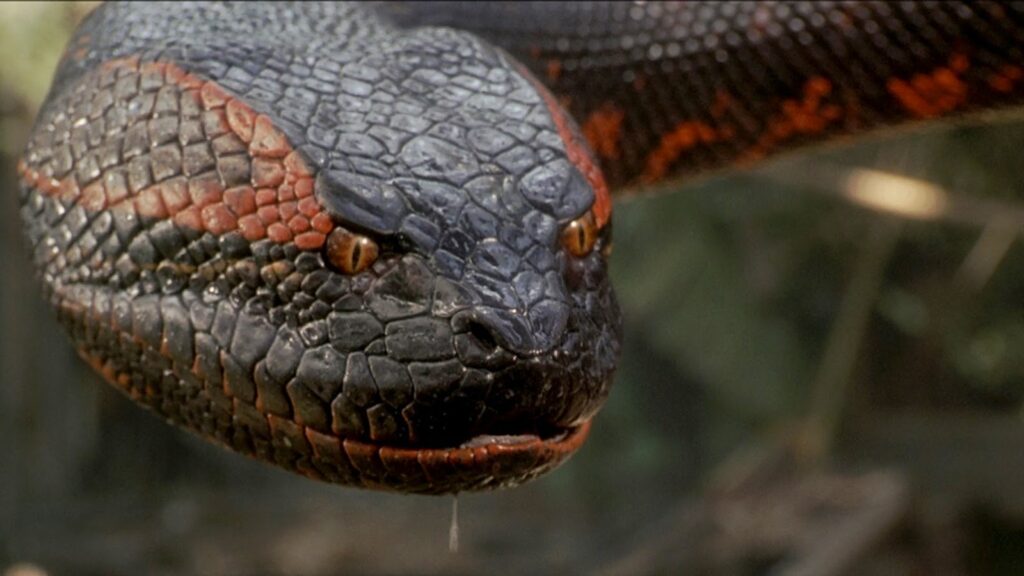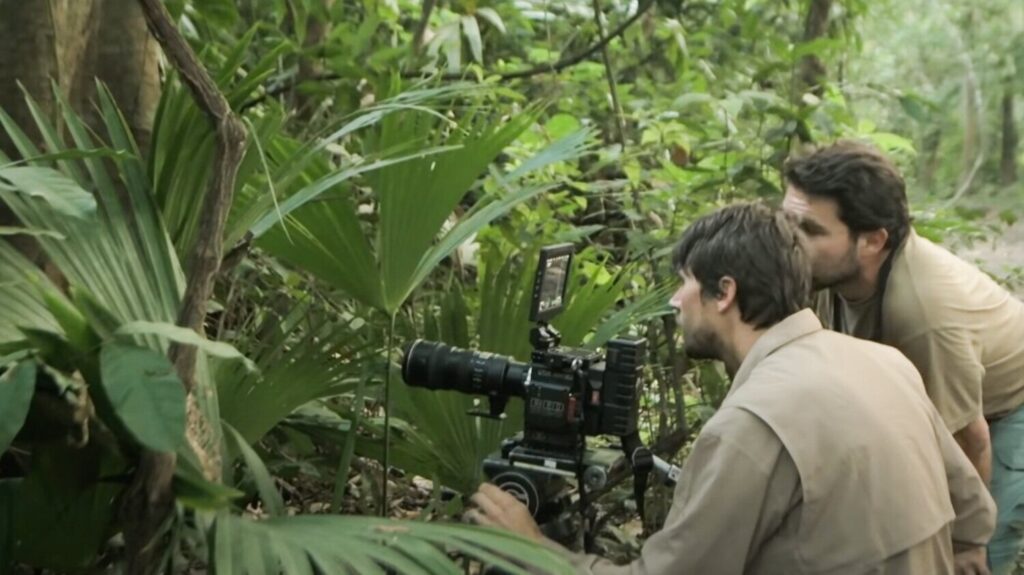Quite possibly the strangest reboot of a film ever!
Genre: Comedy/Adventure
Premise: I’m going to keep this a surprise reveal for the review itself since it’s such a strange concept.
About: That’s right. They’re doing an Anaconda remake! The current draft of the script is written by Tom Gormicon and Kevin Etten, who penned Beverly Hills Cop 4 and The Unbearable Weight of Massive Talent. For some reason, they are not listed as a team on this draft, but rather two individual writers, despite the fact that they always work on the same projects together.
Writers: Tom Gormicon and Kevin Etten
Details: 104 pages

You know, I went back and forth on whether I wanted to review this script.
An Anaconda reboot? Really?
Who was in the last one again? Ice Cube and J-Lo? That’s four names without a single name in them.
But the more I thought about it, the more I realized how valuable a concept like this is in Hollywood and that there’s a huge (big clue there) screenwriting lesson to be learned from it. Two, actually. I’m going to share those lessons with you in a second. But first, let’s see what the Anaconda reboot looks like…
Doug is a frustrated wedding videographer who yearns for the old days when he and his buddies used to make films together. The old crew was a gigantic fan of the original Anaconda, so much so that, when they were in high school, they filmed their own low-budget version of the movie.
Now, twenty years later, they’re all stuck in ruts in their lives, looking for meaning. Besides Doug, there’s Griff, who went on to become a real actor in Hollywood, albeit as 10th billing in shows like SWAT. Then there’s Griff’s old girlfriend, Claire, who just got divorced. During a little friend reunion, Griff reveals that he has the rights to the original book that inspired Anaconda. “What if we made the real movie we wanted to make in high school?” is his pitch.
Everybody invests a little money and they head off to the Amazon river in Brazil. They get a real anaconda from a snake wrangler, Santiago, and rent a boat to go down the river from mysterious boat guide, Ana. They then do a run-and-gun style production of Anaconda, a la “Monsters.”
But their plan goes awry when, during a scene with the snake, Griff freaks out, throws it off him, and the snake falls into the propellers of the boat and gets sliced up. With no snake anymore, they have to re-think the movie, bringing native Ana in as one of the cast for authenticity, and using real boat shots as they head up the river to the next city.
But when they learn that Ana is on the run from the cops and that there’s an actual giant snake trailing them, things get real quickly. Soon, Santiago is sucked up by the giant snake and they have to abandon their boat to escape the police. Stuck in the jungle… filmmaking becomes secondary to staying the f&*k alive.

What’s the lesson I want you to learn today?
There are two. The first is: Hollywood loves big things. They like big apes. They like big lizards. They like big dinosaurs. They like big robots. They like big sharks.
It’s one of the simplest yet most bankable concepts in Hollywood. Find a scary animal and make a big version of it! As silly as that sounds, doing that one thing could make you a million bucks.
But the more I thought about it, the more I realized that SIZE isn’t just about the antagonist in your script. Size is about the nature of the concept itself. In order to be worthy of a movie, your story needs to be LARGER THAN LIFE. I see a lot of writers making the mistake of writing scripts about average situations or “sorta big” situations. That’s not what movies are good at. Movies are for LARGER THAN LIFE SITUATIONS. The biggest of the big.
I was thinking about American Beauty the other day because of a screenwriting lesson I wanted to incorporate into yesterday’s post. On the surface, that movie is a downbeat meandering drama. But when you look deeper, the main character is dead at the opening of the story. That’s as big as it gets – life or death.
One explanation I’ve always liked was: Your movie should be about the biggest moment in your protagonist’s life. If it isn’t, you’re not telling a big enough story.
Always keep that in mind when you’re coming up with your movie ideas. Movies are larger than life. I’d take that a step further even. I’d say: Movies are LARGEST than life. Does it make grammatical sense? No. But I want to tattoo the importance of GOING BIG with your ideas into your brain. Cause if you go small… you’re fighting an almost impossible battle.
Okay, but what about Anaconda!? Is J-Lo and her trainwreck love life back?
I mean, I’ll give it to these writers. This is a unique take. And it’s way more interesting than giving us older flabbier versions of J-Lo and Ice Cube reciting lines from earpieces in front of blue screens that were positioned in their backyards so that they didn’t actually have to leave their homes to shoot the movie.
This is Sony and they’re clearly going for a Jumanji vibe. At one point, the script gets so silly that, as our crew is shooting on their boat in the river, they see another giant boat drifting towards them with huge movie lights and booms and cameras and we see that it’s the real Anaconda remake. Everybody turns to Griff and says, “I thought you had the rights.” And Griff says, “What are movie rights really?” That’s the kind of tone we’re dealing with here.
And they need that tone because the story is wacky. It’s even hard to buy into the initial premise – that all these guys would travel to the literal Amazon to shoot a movie on the fly. The time, planning, and money that would be required is way more than even a tenth of what they’re pretending it would cost here.
This goes back to yesterday’s post. The writers are lying. They’re lying a lot here. There are so many moments you can point out and say, “That’s not truthful.” “That’s not realistic.” Sure, you can hide some of that behind humor. But at least SOME of your movie has to make sense.
The second most clever thing they do is, when their real snake dies, they talk about making an adjustment in the story where they treat things like Spielberg’s Jaws. You never see the snake as much. They, instead, focus on the characters. It’s at that point you realize that they’ve barely showed the snake in our movie at all. So it’s art imitating life while also keeping the price of the real movie down, which is appealing to even the biggest of studios, like Sony.
The most clever thing they did was have the characters stumble upon the abandoned final set for the ACTUAL production of the Anaconda reboot and use that as their way to trap and kill the snake. That part I liked! But you have to get through so much silliness and so many paper-thin character moments to enjoy that climax.
I never bought into the setup. And when you don’t buy into the setup, it doesn’t matter what the writers do from then on. You’re already disengaged. But I find it cool that these writers tried something different. It just didn’t work in my opinion. Will it work with Jack Black and Seth Rogen or whoever they cast in this? Maybe. We’ll have to see.
[ ] What the hell did I just read?
[x] wasn’t for me
[ ] worth the read
[ ] impressive
[ ] genius
What I learned: I already told you what I learned. Go big physically or go big metaphorically. Casual life experiences have no place in the movies.

